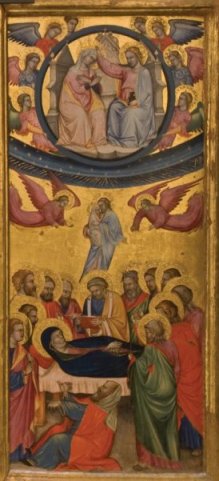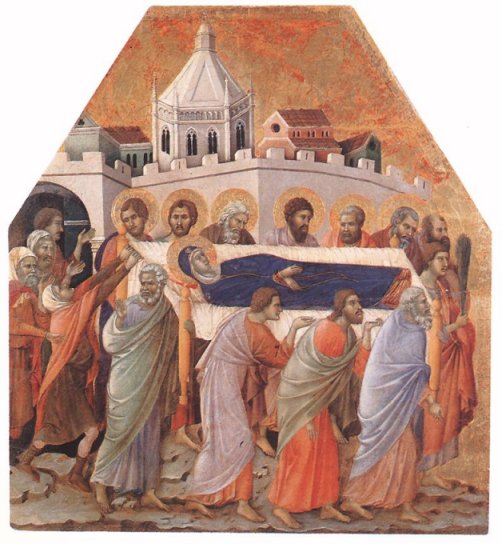|
The Death and Assumption of the Virgin - 2 |
|
|
The Departure
of Mary's soul from her
body |
|
|
|
|
|
The plot thickens
At this point the various texts become distinctly anti-Semitic in tone. Previously, we learn that Mary was forbidden by local Jews from making her twice-daily pilgrimage to the tomb of Christ: The Jews, as soon as the Messiah was dead, closed the tomb, and heaped up large stones against its door; and set watchmen over the tomb and Golgotha, and gave them orders that, if anyone should go and pray by the grave or on Golgotha, he should straightway die. . . . . . And the watchmen came in and said to the priests, ‘Mary comes in the evening and the morning and prays there.’ And there was a commotion in Jerusalem concerning my Lady Mary; and the priests went to the judge and said to him, ‘My lord, send and order Mary not to go and pray at the grave and Golgotha’. (The six books - book 2) Following the death of the Virgin, her
cortege is attacked on the way to the tomb: |
|
|
|
|
| This anonymous fresco from the church of S. Maria Assunta in Trevignano shows, rather graphically, what happens next. | |
|
|
|


